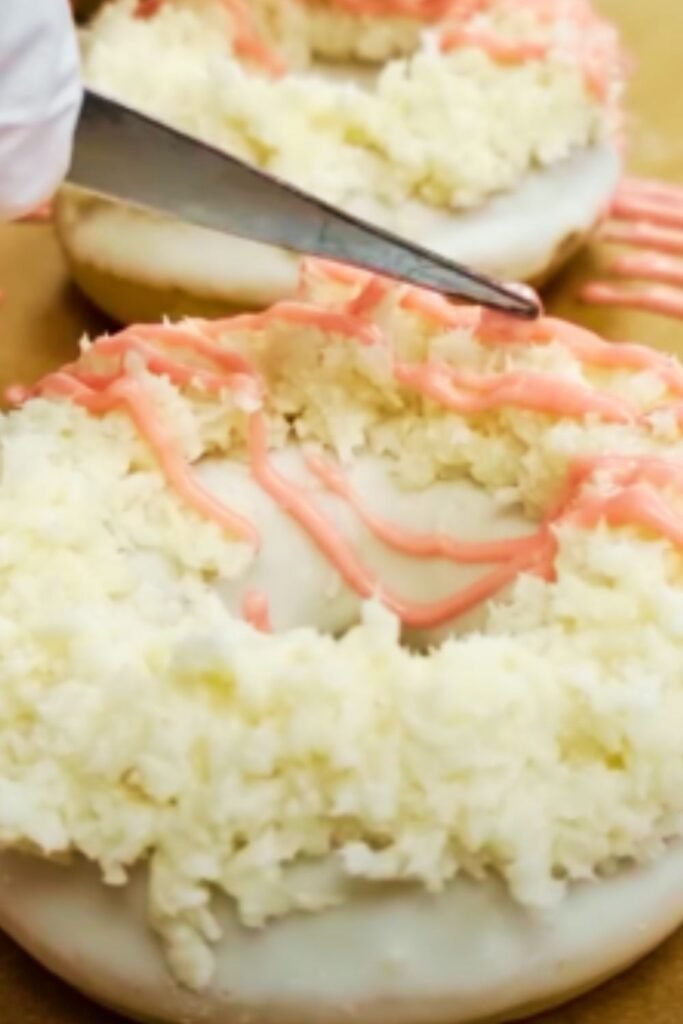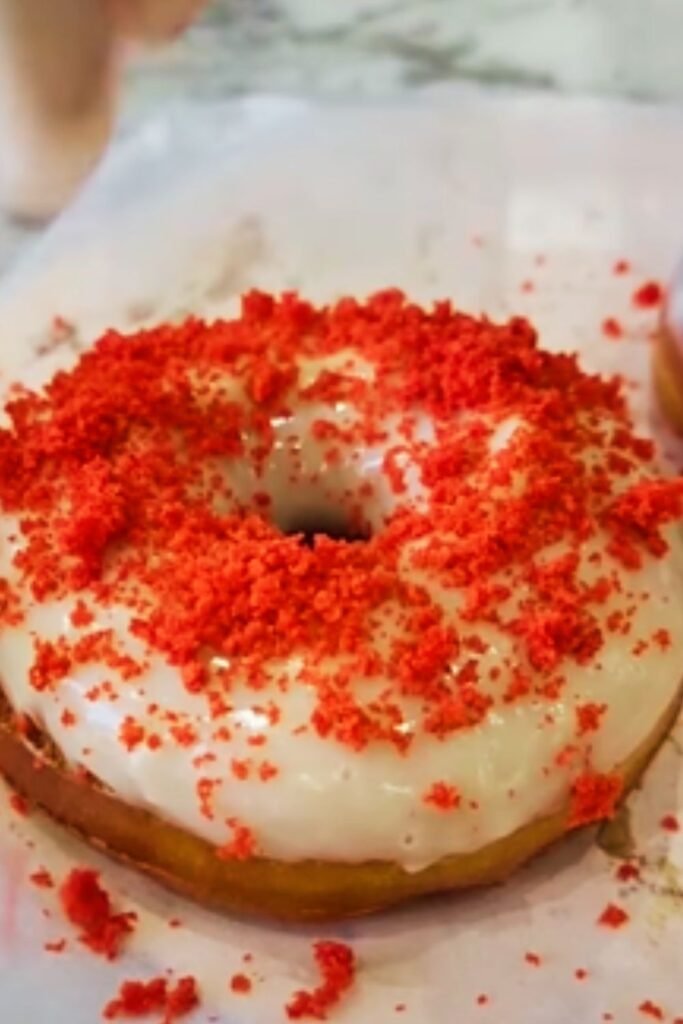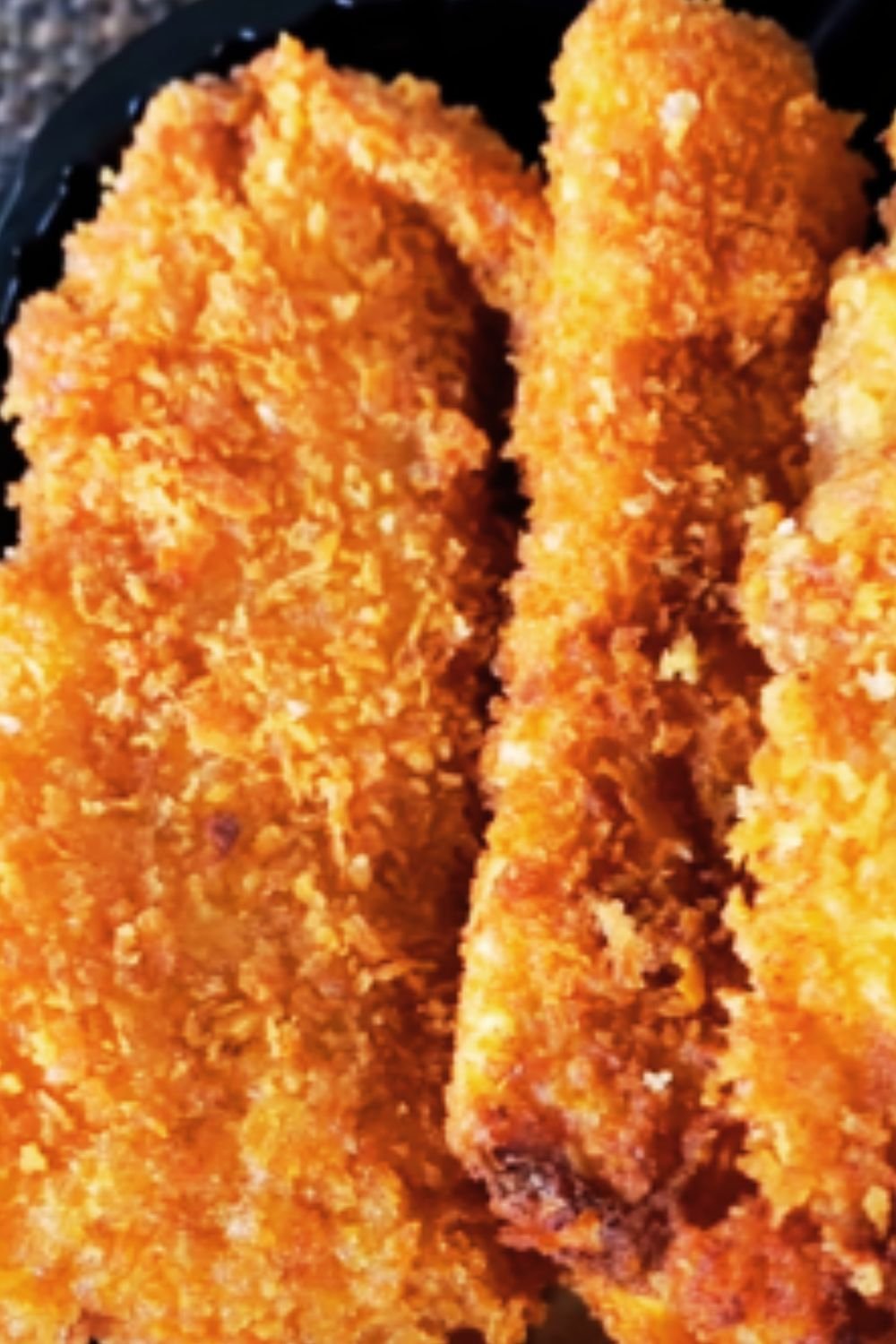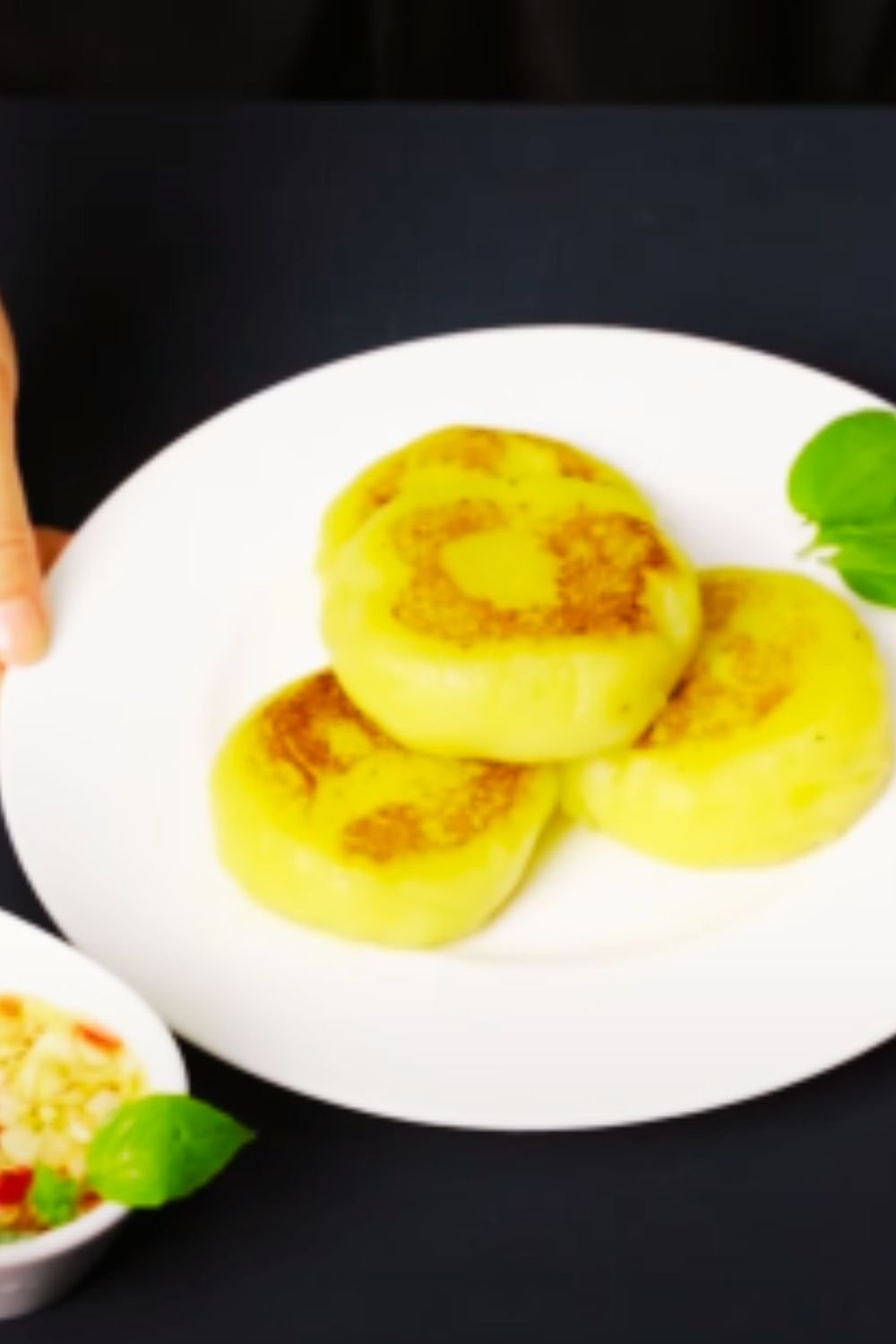There’s something magical about biting into a warm, freshly made donut covered in rich chocolate topping. The soft, pillowy texture of the donut combined with the smooth sweetness of chocolate creates an experience that’s hard to beat. I’ve been making donuts at home for over a decade, and I’m excited to share my favorite recipe and techniques with you today.
The Joy of Homemade Donuts
When I first started making donuts at home, I was intimidated. Would they be as good as bakery donuts? Could I really achieve that perfect texture? After many batches (and some delicious failures), I discovered that homemade donuts aren’t just possible—they’re often better than what you can buy.
Making donuts from scratch allows you to:
- Control the freshness (nothing beats a donut eaten minutes after frying)
- Customize the flavors to your exact preferences
- Adjust sweetness levels
- Create healthier versions if desired
- Impress friends and family with your baking skills
The recipe I’m sharing today has been perfected over many Sunday mornings with my family eagerly waiting by the kitchen counter. The chocolate topping is rich and glossy, providing the perfect complement to the light, airy donuts.
Essential Ingredients for Perfect Donuts
Before we dive into the recipe, let’s talk about what makes a truly exceptional donut. Quality ingredients make all the difference here.
For the Donuts:
- All-purpose flour: The backbone of our donut, providing structure and texture. I recommend using unbleached all-purpose flour for the best results.
- Active dry yeast: This creates the airy, light texture that makes donuts so irresistible. Fresh yeast is critical!
- Whole milk: Adds richness and helps activate the yeast. I prefer whole milk for the best flavor, but 2% works in a pinch.
- Granulated sugar: Provides sweetness and helps feed the yeast for proper rising.
- Eggs: Add structure, richness, and help with the tender crumb we’re looking for.
- Unsalted butter: Provides flavor and tender texture. Always use unsalted so you can control the salt content.
- Salt: Enhances all the flavors and balances sweetness.
- Vanilla extract: Adds depth of flavor to the dough.
- Vegetable oil: For frying. Choose a neutral oil with a high smoke point.
For the Chocolate Topping:
- High-quality chocolate: Using good chocolate makes a world of difference. I prefer semi-sweet with 55-65% cacao content.
- Heavy cream: Creates that silky-smooth ganache texture.
- Butter: Adds shine and helps the topping set properly.
- Powdered sugar: Sweetens and helps with texture.
- Vanilla extract: Enhances the chocolate flavor.
Equipment You’ll Need

Having the right tools makes donut-making much easier:
- Stand mixer with dough hook: Not essential but makes kneading a breeze
- Rolling pin: For evenly rolling out the dough
- Donut cutter or large and small circle cutters: For that classic donut shape
- Deep-fry thermometer: Temperature control is crucial for perfect donuts
- Heavy-bottomed pot: For safe frying
- Cooling rack: For draining excess oil
- Parchment paper: For easy cleanup and dough handling
- Spider strainer or slotted spoon: For safely removing donuts from hot oil
- Mixing bowls: Various sizes for preparing ingredients
- Whisk: For the chocolate topping
- Piping bags: If you want to fill your donuts
Detailed Recipe for Chocolate-Topped Donuts
Now that we have our ingredients and equipment ready, let’s make some amazing donuts!
Donut Dough
Ingredients:
- 3½ cups (440g) all-purpose flour, plus extra for rolling
- 2¼ teaspoons active dry yeast (1 standard packet)
- ¾ cup (180ml) warm whole milk (105-110°F)
- ⅓ cup (67g) granulated sugar
- 2 large eggs, room temperature
- ¼ cup (57g) unsalted butter, melted and cooled
- 1 teaspoon salt
- 1 tablespoon vanilla extract
- Vegetable oil for frying (about 2 quarts)
Instructions:
- Activate the yeast: In the bowl of your stand mixer, combine warm milk, 1 tablespoon of the sugar, and yeast. Let sit for 5-10 minutes until foamy and activated.
- Mix the dough: Add the remaining sugar, eggs, butter, salt, and vanilla to the yeast mixture. Mix on low speed to combine. Gradually add the flour, 1 cup at a time, until a soft dough forms.
- Knead the dough: Switch to the dough hook attachment and knead on medium speed for 5-7 minutes until the dough is smooth and elastic. If kneading by hand, turn dough onto a floured surface and knead for about 10 minutes.
- First rise: Place the dough in a lightly greased bowl, cover with plastic wrap or a clean kitchen towel, and let rise in a warm place for 1-1½ hours, or until doubled in size.
- Roll and cut: After the dough has risen, punch it down gently and turn it out onto a floured surface. Roll the dough to about ½-inch thickness. Using a donut cutter (or 3-inch and 1-inch round cutters), cut out donuts and holes. Re-roll scraps as needed.
- Second rise: Place cut donuts on parchment-lined baking sheets, leaving room between each one. Cover loosely and let rise for 30-45 minutes until puffy.
- Prepare for frying: While donuts are on their second rise, heat oil in a heavy-bottomed pot to 350°F (175°C). Use your deep-fry thermometer to monitor temperature.
- Fry the donuts: Carefully lower donuts into the hot oil, 2-3 at a time to avoid overcrowding. Fry for about 1-1½ minutes per side until golden brown. The donut holes will take less time, about 1 minute total.
- Drain and cool: Remove donuts with a spider strainer or slotted spoon and place on a cooling rack set over paper towels to drain excess oil. Let cool for about 10 minutes before applying the chocolate topping.
Chocolate Topping
Ingredients:
- 8 ounces (227g) high-quality semi-sweet chocolate, chopped
- ½ cup (120ml) heavy cream
- 2 tablespoons unsalted butter
- ¼ cup (30g) powdered sugar, sifted
- 1 teaspoon vanilla extract
- Pinch of salt
- Optional toppings: sprinkles, chopped nuts, shredded coconut, or sea salt
Instructions:
- Prepare the chocolate: Place chopped chocolate in a medium heat-proof bowl.
- Heat the cream: In a small saucepan, heat heavy cream and butter until it just begins to simmer (do not boil).
- Make the ganache: Pour the hot cream mixture over the chocolate. Let sit for 1-2 minutes, then whisk until smooth and glossy.
- Finish the topping: Whisk in powdered sugar, vanilla extract, and a pinch of salt until fully incorporated and smooth.
- Apply to donuts: Dip the top of each cooled donut into the chocolate topping, allowing excess to drip off. Place back on the cooling rack.
- Add garnishes: While the chocolate is still wet, sprinkle with your choice of toppings if desired.
- Set the topping: Allow donuts to sit for about 15-20 minutes for the chocolate to set before serving.
Troubleshooting Common Donut Problems
Even experienced bakers run into issues sometimes. Here are solutions to common donut problems:
| Problem | Possible Cause | Solution |
|---|---|---|
| Donuts absorbing too much oil | Oil temperature too low | Maintain oil at 350°F; use a thermometer to monitor |
| Donuts too dense | Over-kneaded dough or insufficient rising time | Knead just until smooth; ensure proper rising time |
| Donuts raw in the center | Frying too quickly at too high temperature | Lower heat slightly; increase frying time |
| Donuts too dark on outside but undercooked inside | Oil temperature too high | Reduce heat; maintain at 350°F |
| Chocolate topping too thick | Cooled too much before application | Gently reheat over a double boiler until pourable |
| Chocolate topping not setting | Too much cream or butter | Add more sifted powdered sugar to thicken |
| Dough not rising | Dead yeast or too cold environment | Use fresh yeast; provide warm environment for rising |
| Misshapen donuts | Rough handling or dough too warm | Handle gently; chill dough briefly if too soft |
Flavor Variations for Your Donuts

Once you’ve mastered the basic recipe, try these exciting variations:
Different Donut Base Flavors:
- Cinnamon Sugar: Skip the chocolate topping and toss warm donuts in a mixture of granulated sugar and ground cinnamon.
- Lemon-Blueberry: Add 1 tablespoon of lemon zest and ½ cup dried blueberries to the dough. Top with a lemon glaze instead of chocolate.
- Apple Cider: Replace ¼ cup of milk with apple cider and add ½ teaspoon of cinnamon to the dough.
- Chocolate Dough: Replace ¼ cup of flour with unsweetened cocoa powder for chocolate donuts.
Chocolate Topping Variations:
- Maple Chocolate: Add 2 tablespoons of pure maple syrup to the chocolate topping.
- Orange Chocolate: Add 1 tablespoon of orange zest and 1 teaspoon of orange extract to the topping.
- Mint Chocolate: Add ¼ teaspoon of peppermint extract to the chocolate topping.
- Mocha Chocolate: Dissolve 1 tablespoon of instant espresso powder in the hot cream before adding to chocolate.
Storing and Reheating Tips
Donuts are truly best enjoyed fresh, but here’s how to store any leftovers:
- Same day: Store at room temperature in an airtight container for up to 12 hours.
- Next day: Refrigerate in an airtight container for up to 2 days. Bring to room temperature before eating.
- Freezing: Freeze unglazed donuts in a single layer, then transfer to a freezer bag for up to 3 months.
- Reheating: Warm refrigerated donuts in the microwave for 10-15 seconds or in a 350°F oven for 3-5 minutes.
- Refreshing stale donuts: Split in half and toast cut-side down in a buttered skillet.
Serving Suggestions

Turn your homemade donuts into a special occasion with these serving ideas:
- Create a donut bar with various toppings in small bowls for guests to customize their own
- Serve alongside fresh fruit to balance the sweetness
- Pair with hot beverages like coffee, tea, or hot chocolate
- Stack on a tiered cake stand for an impressive display
- For brunch, offer both sweet donuts and savory breakfast items
- Create donut “sandwiches” with ice cream in between two halves
- Serve with cold milk for the classic combination
- Offer donut holes in paper cones for easy eating
Nutritional Information
Understanding what’s in your homemade treats can help you enjoy them as part of a balanced diet:
| Nutrient | Amount per Donut (with chocolate topping) |
|---|---|
| Calories | Approximately 290-320 |
| Total Fat | 16-18g |
| Saturated Fat | 7-8g |
| Cholesterol | 45-50mg |
| Sodium | 150-175mg |
| Total Carbohydrates | 34-36g |
| Dietary Fiber | 1-2g |
| Sugars | 14-16g |
| Protein | 4-5g |
Note: These values are estimates and may vary based on exact ingredients and portion sizes.
Making Ahead and Batch Preparation
If you’re planning for a special event or want to streamline your morning routine:
- Prepare dough in advance: Make the dough the night before and let it slow-rise in the refrigerator overnight. This actually improves flavor!
- Freeze cut donuts: After cutting out shapes, freeze unrisen donuts on a baking sheet, then transfer to freezer bags. Thaw in the refrigerator overnight, then let rise at room temperature before frying.
- Prepare topping in advance: The chocolate topping can be made up to 3 days ahead and stored in the refrigerator. Gently reheat in a double boiler or microwave at 50% power until pourable.
- Batch frying: If making a large batch, keep fried donuts warm in a 200°F oven while finishing the rest.
- Assembly line: For entertaining, set up stations: one for frying, one for cooling, and one for topping and decorating.
Healthier Alternatives
While donuts aren’t typically considered health food, here are some modifications for a slightly healthier version:
- Bake instead of fry: Place cut donuts on parchment-lined baking sheets and bake at 375°F for 10-12 minutes
- Use whole wheat flour for half of the all-purpose flour
- Reduce sugar by 25% in both dough and topping
- Use low-fat milk instead of whole milk
- Try a dark chocolate topping with 70% or higher cacao content
- Use Greek yogurt to replace half the butter in the dough
- Add finely shredded zucchini or carrots to the dough for added nutrition
- Use alternative sweeteners like coconut sugar or maple syrup
Questions and Answers
Q: Why did my donuts come out greasy?
A: Greasy donuts typically result from oil that’s not hot enough. When the oil is too cool, the donuts spend more time cooking and absorb more oil. Always use a thermometer to ensure your oil stays between 350-360°F. Also, make sure not to overcrowd the pot, as this can lower the oil temperature.
Q: Can I make the dough without a stand mixer?
A: Absolutely! You can mix the dough by hand using a large bowl and wooden spoon, then knead on a floured surface for about 10-12 minutes until smooth and elastic. It’s more work but can be quite therapeutic and gives you a better feel for when the dough is properly developed.
Q: My chocolate topping is too runny. How do I fix it?
A: If your chocolate topping is too thin, gradually whisk in more sifted powdered sugar, 1 tablespoon at a time, until it reaches your desired consistency. You can also let it cool for a few minutes, which will naturally thicken it. If it’s still too runny, add 1-2 teaspoons of cornstarch.
Q: Can I use instant yeast instead of active dry yeast?
A: Yes! You can substitute instant yeast for active dry yeast in equal amounts. The advantage of instant yeast is that you can skip the activation step—simply mix it directly with your dry ingredients.
Q: How can I tell when the donuts are perfectly cooked?
A: Perfectly cooked donuts should be golden brown on both sides and feel light when lifted with a slotted spoon. If you’re uncertain, you can test one by breaking it open—the interior should be light, fluffy, and fully cooked with no raw dough. A digital thermometer inserted into the center should read 185-190°F.
Q: Can I make these donuts gluten-free?
A: Yes, you can substitute a 1:1 gluten-free flour blend designed for baking. Look for one that contains xanthan gum. The texture may be slightly different, but still delicious. You might need to adjust the liquid slightly as gluten-free flours often absorb moisture differently.
Q: How long does the chocolate topping take to set completely?
A: The chocolate topping will begin to set within 15-20 minutes at room temperature but may take up to an hour to set completely, depending on the thickness and room temperature. For faster setting, you can place the donuts in the refrigerator for about 10 minutes.
Q: My donuts deflated when I put them in the oil. What went wrong?
A: Deflating donuts usually indicate that they were over-proofed (allowed to rise too long) or that they were handled too roughly when transferring to the oil. Try reducing the second rise time or being more gentle when picking them up. Using a thin spatula can help transfer them to the oil without deflating.
The Secret to Truly Special Donuts
After years of making donuts at home, I’ve discovered that the real secret to exceptional donuts isn’t just in the recipe—it’s in the process and the love you put into making them. Don’t rush. Take your time with the dough, be patient with the rising process, and pay attention to details like oil temperature.
What makes homemade donuts special is their imperfection—the slightly irregular shapes and the fact that no two are exactly alike. Embrace this handcrafted quality; it’s what makes them so much more charming than store-bought varieties.
I hope this comprehensive guide helps you create beautiful, delicious chocolate-topped donuts that will delight everyone who tastes them. There’s something deeply satisfying about sharing homemade donuts with people you care about, watching their eyes light up with that first bite. It’s worth every minute spent in the kitchen.
Happy donut making!


